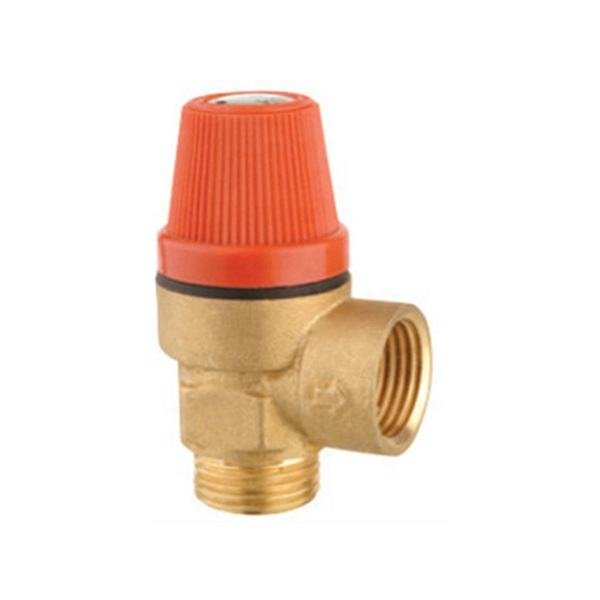Selecting the right valve for your transformer can be a headache, especially when terms like PRD and PRV get thrown around. A wrong choice could lead to equipment failure, costly downtime, or even safety hazards. Don’t worry—IVALVECRAFT is here to clear up the confusion with expert insights, helping you pick the perfect valve for your needs. Read on to solve this puzzle!
The difference between a PRD (Pressure Relief Device) and a PRV (Pressure Relief Valve) in transformers lies in their function and operation. A PRD is a safety device that automatically releases excess pressure to prevent damage, while a PRV is a manually or automatically controlled valve that maintains consistent pressure by regulating flow.
This article dives deeper into pressure control valves, their types, and their roles in transformers. Stick with us to understand how these components ensure your systems run smoothly and safely.

What is the Difference Between a Pressure Regulator and a Pressure Regulating Limit Valve?
Understanding the difference between a pressure regulator and a pressure regulating limit valve is key to choosing the right equipment for your transformer system. A pressure regulator maintains a steady output pressure regardless of input variations. It’s like a traffic cop, ensuring the flow stays consistent to protect downstream equipment. For example, in a transformer, a pressure regulator keeps the oil or gas pressure stable to avoid stress on components.
On the other hand, a pressure regulating limit valve acts as a safety net. It kicks in when pressure exceeds a set limit, diverting or releasing excess pressure to prevent damage. Think of it as an emergency brake—it only engages when things get out of hand. For instance, in high-pressure scenarios, this valve ensures the transformer doesn’t rupture.
Both devices are critical, but they serve different purposes. A regulator is about control, while a limit valve is about protection. At IVALVECRAFT, our pressure reducing valves and safety valves are designed to meet these needs, offering high quality and stable performance for your projects.
What Are the Two Types of Pressure Control Valve?
Pressure control valves come in two main flavors: pressure reducing valves and pressure relief valves. Knowing their roles can help you make smart choices for your transformer systems.
A pressure reducing valve (PRV) lowers the incoming pressure to a safe, consistent level. It’s like turning down the volume on a loud speaker—keeping things manageable. The pressure reducing valve working principle involves a diaphragm or piston that adjusts the flow to maintain steady output. You’ll often see a pressure reducing valve symbol in diagrams, showing a valve with an arrow indicating flow direction. These are perfect for applications like plumbing systems or transformer oil circuits, where stable pressure is a must.
A pressure relief valve, on the other hand, is a safety champ. It opens only when pressure hits a dangerous level, releasing excess to protect the system. The pressure relief valve diagram typically shows a spring-loaded mechanism that pops open under high pressure. These valves are vital in transformers to prevent explosions or leaks. IVALVECRAFT’s brass safety valves are built for this, ensuring reliability in tough conditions.
Each type has its place, and mixing them up could spell trouble. Our products at IVALVECRAFT cover both, giving you options for any setup.
What is the Difference Between Pressure Relief and Pressure Reducing Valve?
The difference between pressure relief valve and pressure reducing valve often trips people up, but it’s simple once you break it down. Both are crucial for transformer safety, but they do different jobs.
A pressure reducing valve is all about control. It takes high-pressure input and dials it down to a safe, steady level for your system. Imagine a water hose—you adjust the nozzle to get the right flow. The pressure reducing valve symbol in schematics shows this control, with a distinct arrow for flow regulation. In transformers, these valves ensure oil or gas pressure stays within safe limits, protecting components from wear. The pressure reducing valve working principle relies on a spring or diaphragm to balance the flow, making it ideal for consistent operations.
A pressure relief valve, however, is your last line of defense. It sits quietly until pressure spikes too high, then opens to release the excess. Think of it as a safety valve on a pressure cooker. The pressure relief valve diagram shows a spring-loaded setup that activates under extreme conditions. In transformers, this prevents catastrophic failures like tank ruptures. The difference between hydraulic pressure relief valve and pressure reducing valve is similar—hydraulic versions handle liquid systems but follow the same logic.
Confusing them can lead to inefficiencies or risks. IVALVECRAFT’s thermostatic mixing valves and safety valves are engineered to avoid these issues, offering robust solutions for your needs. Want to dive deeper? Check out our difference between pressure relief valve and pressure reducing valve pdf resources for detailed specs.
Summary
Choosing the right valve for your transformer doesn’t have to be confusing. By understanding the difference between pressure relief valve and pressure reducing valve, you can ensure safety and efficiency. Pressure regulators and reducing valves maintain steady flow, while relief valves and limit valves protect against dangerous spikes. IVALVECRAFT’s high-quality brass safety valves, pressure reducing valves, and other products are designed for reliability in demanding applications like transformers. Whether you’re a purchasing officer or a plumbing wholesaler, we’ve got you covered with solutions that deliver stable pressure and sufficient flow.
Choose IVALVECRAFT, choose reliable partner, enjoy the high quality and best service.


